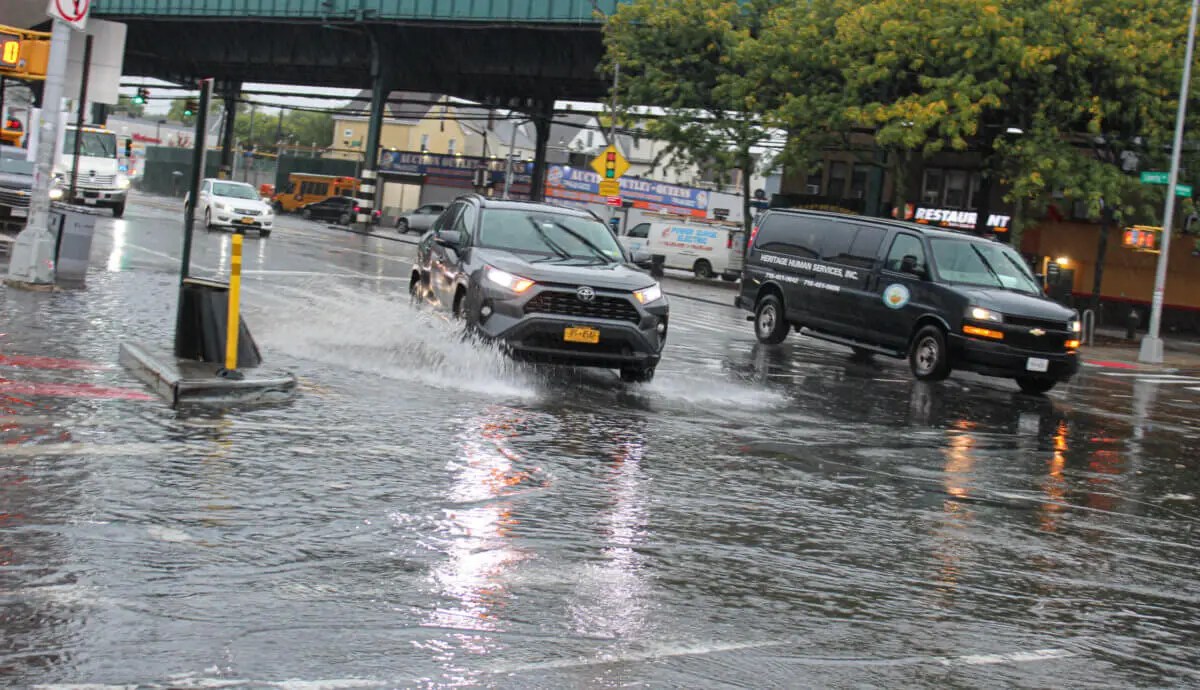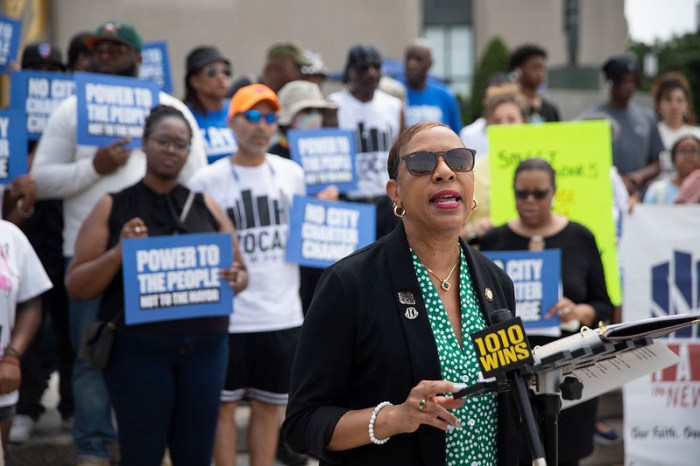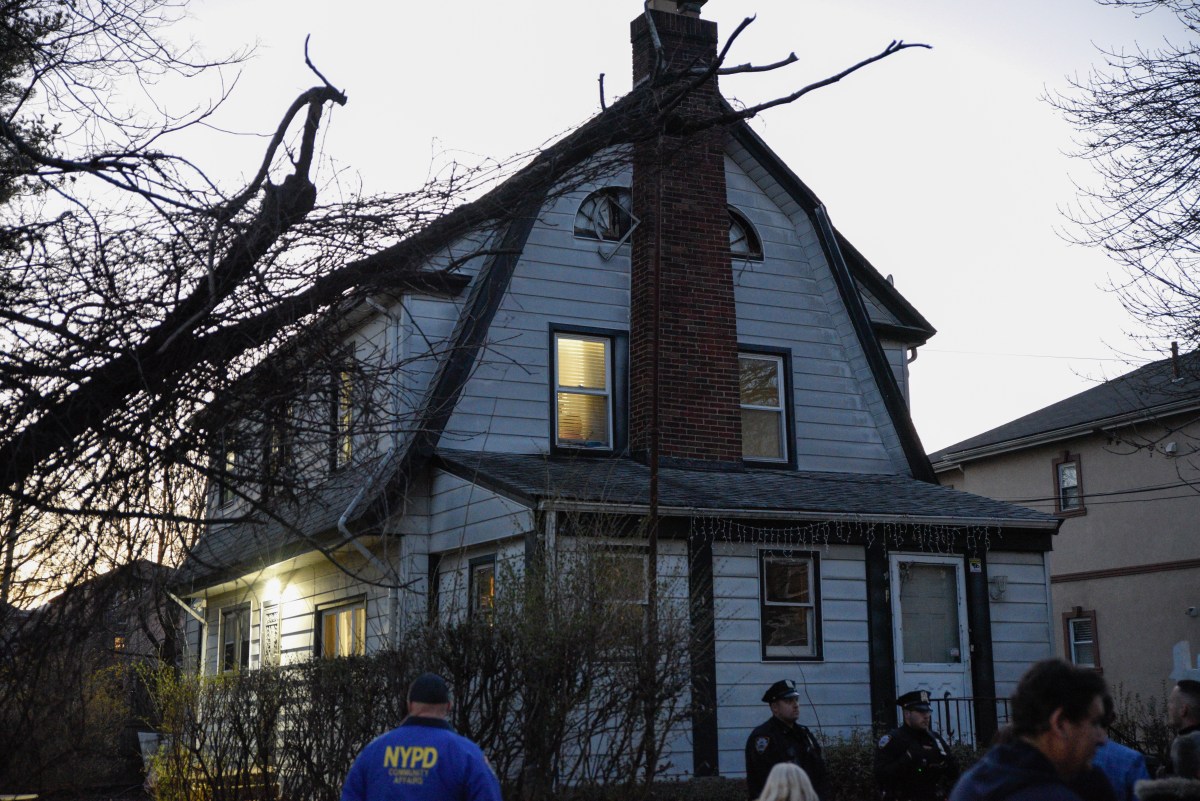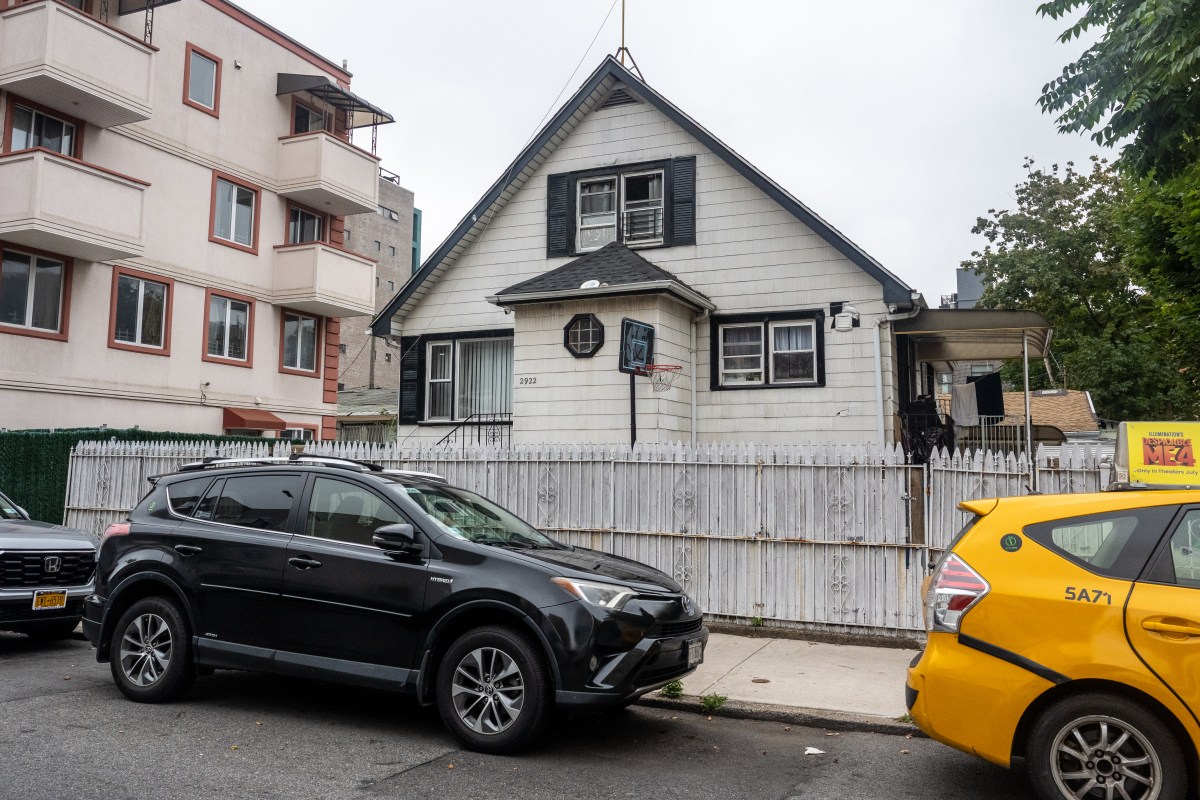City Comptroller Brad Lander is urging Mayor Eric Adams’ administration to beef up the Big Apple’s storm preparedness as his office released a new report finding “big gaps” in the city’s response to Tropical Storm Ophelia last fall.
The report — dubbed “Is New York City Ready for Rain?” — analyzed several aspects of the city’s flash-flood readiness following the storm on Sept. 29 last year, including its operations, interagency coordination, public communications and the state of its stormwater infrastructure.
Lander’s office found that during the storm two-thirds of the trucks used to clean city catch basins were out of service, the administration had not yet appointed someone to the position of “Extreme Weather Coordinator” and its major public communications did not start until three hours after the flooding began.
The city’s fiscal watchdog also made 11 recommendations for how to improve its storm response going forward.
The comptroller, during a Monday press conference, recounted the devastating impact of the storm, which dumped a cumulative 8.65 inches of rain on the five boroughs, and how the city’s response seemed to be lacking at the time.
“We all remember the videos of our subway stations being turned into waterfalls, of the FDR [Drive] underwater and having to be closed, of New Yorkers stranded in their schools, on their highway and even [the] closed down a terminal at Laguardia Airport,” Lander said. “At the time, there was real reason to believe that a lack of clear communication and preparedness made the city’s response to the storm worse.”
However, City Hall spokesperson Liz Garcia defended the administration’s response, in a statement, claiming it mobilized to help New Yorkers through the storm in several ways.
“In the face of Tropical Storm Ophelia — which brought more total rainfall than [Hurricane] Ida in some parts of the city — our city agencies inspected over 900 catch basins, distributed thousands of flood barriers, rain barrels, and other protective tools, and got the word out to millions of New Yorkers two days ahead of the event,” Garcia said.
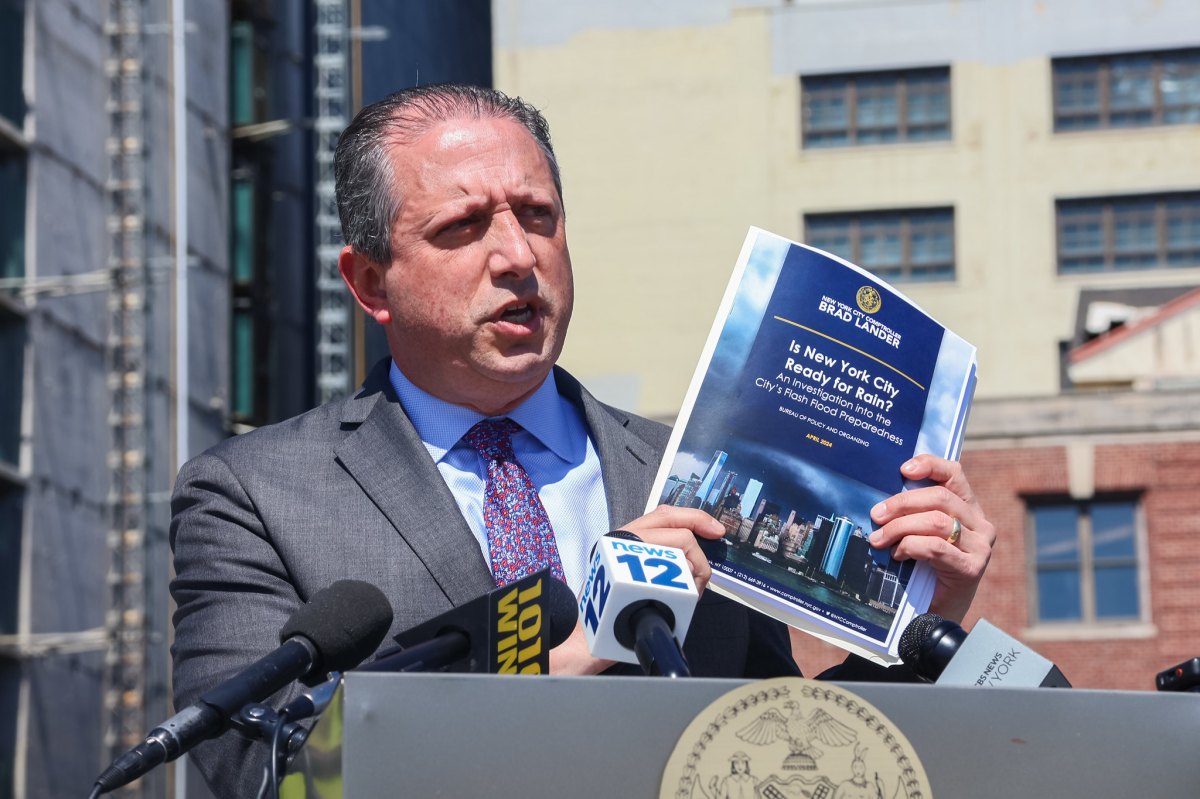
The report was not all bad news for the administration. It did complement New York City Emergency Management’s (NYSEM) activation of its emergency flash flood plan the day before the storm arrived and DEP’s work to identify the 964 catch basins that were a priority to clean first, among other efforts.
Nonetheless, the report found that only 19 of the city Department of Environmental Protection’s (DEP) 51 specialized catch basin cleaning trucks were in working order during the storm. The number of out-of-service trucks amid the rainfall — 63% — was consistent throughout 2023, according to the report, but rose to 76% by the end of the year.
The comptroller said the primary reason for the lack of available trucks was that the mayor’s budget cuts reduced the number of available mechanics at DEP and the city Department of Sanitation (DSNY), which also helps care for the fleet.
“This really is a place, when you talk about the ways in which there are budget cuts, and you might not see the things that are most impacted until it emerges into view, this is a good example,” Lander said.
Among the report’s recommendations is for the city to replace the broken-down trucks and move maintenance of the vehicles completely away from DSNY and completely under DEP.
Lander’s office also found that most of the city’s communications to the public about the storm came after the flooding had already begun, with the mayor’s first news conference on the extreme weather occurring three hours past the time the rain started falling. Furthermore, NYCHA’s robocalls to warn residents about the storm did not go out until 9 hours after it began, according to the report.
Garcia argued the administration did communicate about the storm earlier. She pointed to TV and radio appearances that NYSEM Commissioner Zach Iscol made the day before to warn New Yorkers about the storm.
The comptroller’s office reported that only 2.7% of city residents over the age of 16 — 185,895 people — received alerts through the city’s electronic notification system, NotifyNYC, during the rainfall. The number of NotifyNYC users who were notified about the storm is far lower than its 1.2 million overall subscribers.
The comptroller’s office recommended the administration set targets for greatly expanding the number of NotifyNYC subscribers, while also finding new ways to alert New Yorkers about emergency weather events and do it further in advance.
“In real time emergency events you need to be able to communicate more quickly to be honest about what you do and don’t know to give people a heads up about what to do,” Lander said. “We’ll need protocols to make sure that we notify people early without being too early.”
On top of that, Lander’s report said, and published reports at the time of the storm indicated, that the city had not yet appointed an Extreme Weather Coordinator, a role established by former Mayor Bill de Blasio following Hurricane Ida in 2021.
But Lander’s office revealed — via a confirmation by City Hall in March — that Adams’ Chief of Staff Camille Joseph Varlack has taken on the role. While Varlack is not a weather expert, appointing a chief of staff to the role is not unprecedented, Lander said. De Blasio’s former chief of staff, Emma Wolfe, previously held the title.
“This is not the position that’s supposed to know the weather the best, understand how to read the maps or the patterns,” Lander said. “This is the person who makes sure that all the different people in different parts of the administration are aligned.”
However, Garcia insisted the administration had an extreme weather coordinator, who worked under Varlack, during the storm. But she declined to name the person and did not provide an explanation as to why. She said Varlack has since assumed the role.
“Our extreme weather coordinator has always reported to the chief of staff, and as we have continued to think about best practices around weather preparedness, that position has now shifted to Chief of Staff Joseph Varlack,” Garcia said, in a statement. “Thanks to the work of the chief of staff and weather coordinators from city agencies, our readiness efforts have only continued to improve, saving lives and preventing damage to communities.”
This story was updated at 9:45 p.m. on April 22.



